Introduction
Architectural rendering stands at the intersection of artistry and technology, transforming conceptual designs into vivid visual experiences. This intricate process not only requires a thorough understanding of light, texture, and perspective but also demands the application of advanced techniques to convey the intended narrative effectively.
As the architectural rendering market continues to expand, projected to reach USD 1800.8 million by 2030, the need for high-quality visualizations has never been more critical. This article delves into the essential components of architectural rendering, explores innovative methods for integrating sky backgrounds, and highlights the importance of post-production techniques in enhancing overall visual impact.
By addressing common challenges and providing practical solutions, it aims to equip architects with the knowledge necessary to elevate their designs, ensuring that every rendering resonates with clarity and precision.
Understanding Architectural Rendering Basics
Design visualization includes the meticulous process of generating two-dimensional images or animations that illustrate the characteristics of a proposed design. Mastery in this area requires a profound understanding of light, texture, and perspective to achieve a realistic visual representation. Significantly, the design visualization market is expected to attain USD 1800.8 million by 2030, indicating an increasing demand for high-quality visualizations in the sector.
One of the key advantages of 3D exterior visuals is their capacity to improve communication between homeowners and contractors. These visualizations serve as a bridge, enabling stakeholders to share a common understanding of the design intent. The key elements essential to effective architectural visualization include:
- 3D Modeling: This serves as the foundational layer of visualization, where the architectural design is meticulously crafted within a 3D software environment. Precise modeling is essential, as it serves as the foundation upon which all other visualization techniques are utilized.
- Lighting: Lighting is crucial in establishing depth and realism within visuals. It is essential to simulate both natural and artificial light sources accurately, as this influences how the design interacts with its environment. Proper lighting not only enhances the aesthetic appeal but also affects the perception of space and form, contrasting beautifully with both interior and exterior elements.
- Textures and Materials: The application of realistic textures to surfaces significantly improves the visual quality of the image. By choosing suitable materials and textures, designers can produce a more realistic depiction that connects with viewers, highlighting durability and aesthetic charm in their visualizations.
Level of Detail: The degree of detail in building visuals is vital, as it can greatly affect how well homeowners and builders comprehend the design. Higher levels of detail can provide a more immersive experience, allowing stakeholders to visualize the final product more accurately. Conversely, simpler visuals may be more suitable during the initial phases of design, facilitating quicker feedback and iteration.
Furthermore, statistics show that 64% of viewers make purchases after seeing branded videos on social media, underscoring the importance of high-quality visuals in client engagement and decision-making processes. A comprehensive grasp of these foundational concepts is vital, as they dictate how the architectural rendering sky background architecture will seamlessly integrate and interact with the architectural elements in your visuals, ultimately elevating the overall visual experience. Furthermore, with 28% of global architects indicating that the majority of their building projects meet green standards, realistic visualizations play a vital role in encouraging sustainable design practices.
This immersive impact fosters community connections for future homeowners, demonstrating the significant benefits of preliminary conceptual visuals in architecture, including quick visualization, cost-effectiveness, informed decision-making, and enhanced communication. These initial visuals allow stakeholders to explore design options quickly, ensuring that the final decisions are well-informed and aligned with the project goals.
Techniques for Integrating Sky Backgrounds in Renderings
To achieve seamless integration of sky backgrounds in building renderings, consider employing the following advanced techniques:
Layering in Photoshop: Start by bringing your rendered building illustration into Photoshop. Create a new layer specifically for the sky visual, positioning it behind the architectural elements to maintain depth and realism. This method allows for a tailored approach, accommodating the unique requirements of each project, making the final render feel more authentic and inviting.
Blending Modes: Utilize various blending modes, such as Overlay and Multiply, to experiment with how the sky integrates with your image. This process allows for a more organic integration, enhancing the visual narrative of the scene while ensuring the investment in quality is reflected in the final output, making the environment feel alive and dynamic.
Masking: Implement layer masks to selectively hide or reveal portions of the sky image. This technique allows for finer adjustments, ensuring that the background enhances the structural elements without overpowering them, thereby highlighting the significance of customization and modifications in your visual process and creating a more lived-in feel.
Adjusting Colors: It is crucial to match the color tones of the sky background with the lighting conditions of your depiction. This consistency not only enhances the overall aesthetic but also reinforces the realism of the scene, underscoring the significance of intricate details in construction visuals that evoke emotional responses from viewers.
These methodologies will elevate the cohesiveness and realism of your building visualizations, particularly through architectural rendering sky background architecture, ultimately resulting in more engaging and impactful presentations. As noted in the case study ‘How Sky Enhances Storytelling in Design,’ architectural rendering sky background architecture plays a pivotal role in the narrative context of a building, making these techniques essential for effective storytelling in construction. Investing in high-quality visual representations is crucial for lead architects, as it fosters informed decision-making and enhances the emotional impact of the projects by making them feel real and tangible.
With more than 500 talented creators and 12 years of experience in visual representation, our studio is dedicated to excellence. As Alex Hogrefe mentions, ‘This post first appeared on Visualizing Architecture,’ highlighting the significance of incorporating advanced methods in design visualization. Additionally, utilizing D5 Render’s real-time visualization feature can significantly enhance your workflow, allowing for quick adjustments and experimentation with different architectural rendering sky background architecture.
Choosing the Right Sky Images for Realistic Effects
When choosing sky visuals for building representations, several important factors should be considered:
Resolution: Choosing high-resolution visuals is crucial for preserving clarity and detail, especially when visuals are scaled to fit your representations. Standard resolutions vary, with preliminary renders typically utilizing dimensions such as 720×480 pixels or 1800×1200 pixels. According to the case study on standard resolutions for 3D visualization, higher resolutions, including 2K and beyond, provide increased detail that is indispensable for professional-quality outputs. This degree of detail is not simply decorative; it improves client involvement by enabling stakeholders to envision the project more precisely, acting as a glimpse into the future of the development.
Lighting Conditions: It is essential to select sky visuals that align with the lighting conditions portrayed in your building illustrations. For instance, bright and sunny skies are ideal for daytime scenes, whereas moody, overcast visuals can evoke dramatic effects appropriate for dusk or stormy environments. The illumination in the sky depiction should effortlessly blend with the overall scene to boost realism, which is crucial for effective communication of the project’s vision and for making informed choices.
Perspective: Ensuring that the viewpoint of the chosen sky representation aligns with that of your architectural visualizations is essential for achieving a harmonious look. Discrepancies in perspective can lead to visual dissonance, detracting from the overall effect of the depiction and hindering informed decision-making.
Color Palette: The selected sky visuals should complement the overall color scheme of your project, enhancing visual harmony. A well-matched color palette contributes to the aesthetic appeal of the rendering while ensuring that the sky does not overshadow the architecture itself. This attention to detail fosters a deeper emotional connection with the audience and builds excitement about the project.
Types of Images: It’s important to note that certain types of images, such as line art, may not fit the criteria discussed. As a notable exception, line art consists of pure black and white drawings that contain straight or curved lines, which may not convey the desired realism in visualizations. By meticulously considering these aspects, you can significantly elevate the realism and effectiveness of your visuals, ultimately leading to a more engaging and informed project experience.
Post-Production Techniques for Enhanced Architectural Visuals
Post-production methods are crucial for raising designs to a professional level, improving communication and nurturing client relationships. Here are several advanced methods to consider:
Color Correction: Achieving a cohesive visual narrative begins with color correction. By adjusting the overall color balance, architects can unify the architectural rendering sky background architecture with building elements, thereby enhancing realism. This technique not only improves the aesthetic quality of architectural rendering sky background architecture but also aids in clearer communication of the design intent, helping clients visualize the final outcome. Utilizing tools like Curves and Levels in Photoshop allows for precise fine-tuning of colors, ensuring that your renderings convey the intended mood and ambiance.
Adding Atmospheric Effects: The inclusion of atmospheric effects such as haze or lens flares can significantly enhance depth and realism. These effects can be introduced through specific brushes or overlay techniques in Photoshop, contributing to a more immersive environment that captivates viewers and tells a story that resonates with clients. By creating a more engaging visual experience, these techniques can facilitate quicker buy-in from clients and investors.
Sharpening and Detailing: Selective application of sharpening filters can enhance details in both building structures and backgrounds. This meticulous approach ensures that the final image is crisp and visually appealing, showcasing the intricacies of the design and the investment in quality that high-caliber architectural visualization demands. Enhanced details can also reduce the number of revisions needed, streamlining the project workflow.
Final Compositing: A refined output requires careful final compositing. Ensure that all layers are blended seamlessly by adjusting opacity and blending modes as necessary. This attention to detail will create a cohesive and professional appearance, enhancing the emotional impact of your project and aiding in effective communication with clients.
As the 3D visualization market is projected to grow at a CAGR of 25% between 2024 and 2032, employing these post-production techniques will not only enhance the aesthetic appeal of your visuals but also serve as powerful marketing tools for architects and developers to showcase designs and attract investors. Techniques like motion blur and vignetting, as highlighted in the case study titled “Post-Production Techniques for Visualization,” elevate the perceived quality of visualizations, making them more visually entertaining and effective. Additionally, the strategic addition of secondary objects—such as plants, animals, and cars—can help decrease processing time while enhancing the overall composition.
As mentioned by 3D expert Sushmita Roy, sharing insights from real-world experience can illuminate the transformative potential of these methods for visualizations, ultimately enhancing communication and collaboration in the design process.
Overcoming Challenges in Adding Sky Backgrounds
Integrating sky backgrounds into architectural renderings presents several challenges that can significantly impact the overall quality of the visualization, especially when striving for customization and client engagement:
Mismatch in Lighting: A frequent issue arises when the lighting of the sky does not harmonize with the rendering, leading to a disjointed appearance. For instance, in the case study of the ‘Default HDRI in D5 Render,’ users are advised to manually control exposure settings to achieve desired background effects. This adjustment is critical for achieving a realistic atmosphere, as the ‘Pure White’ HDRI background may appear gray if auto exposure is enabled, indicating the need for manual adjustments that reflect the unique vision of the project.
Perspective Issues: Discrepancies in viewpoint between the sky depiction and the building illustration can disrupt the visual integrity of the scene. Tools like the Transform feature in Photoshop can be effectively utilized to align the perspective of the sky photograph, ensuring it complements the architectural elements accurately. This meticulous alignment enhances realism and emotional impact, making the project feel more authentic.
Clarity and Detail Loss: Enlarging pictures can result in a loss of detail, which detracts from the overall quality of the presentation. It is advisable to begin with high-resolution sky images to maintain clarity, avoiding excessive scaling that could compromise visual fidelity. This attention to detail is crucial for engaging clients and conveying the project’s potential effectively.
Color Clashing: When the colors of the sky background clash with the visuals, employing color correction techniques becomes necessary. These techniques help to harmonize the color palette, creating a cohesive and aesthetically pleasing result that resonates with the emotional aspects of the design.
Custom Mode Adjustments: Utilizing custom mode allows free adjustment of sun altitude and azimuth angles, which can enhance the overall lighting setup. However, architects should be cautious as this may lead to ‘double shadow’ effects, presenting another layer of complexity in achieving seamless integration.
As Leander aptly noted, “It would also help if you uploaded your file so others can improve the scene settings.” This highlights the importance of collaboration in refining scene settings and overcoming these challenges through iterative feedback.
By acknowledging these challenges and applying the suggested techniques, architects can improve their designs by utilizing architectural rendering sky background architecture to attain high-quality visual results. Our passion for capturing intricate details—like the way sunlight dances off surfaces and the subtle textures of materials—ensures that your project feels real, lived-in, and ready to be built. For those seeking to visualize and validate their design concepts, collaborating with J. Scott Smith Visual Designs can offer the clarity and expertise required to realize your vision.
Contact us today to start your journey towards stunning architectural renderings.
Conclusion
Architectural rendering is a sophisticated blend of artistry and technology that plays a pivotal role in transforming design concepts into vivid visualizations. The exploration of essential components, including:
- 3D modeling
- Lighting
- Textures
- Integration of sky backgrounds
reveals how critical these elements are in enhancing communication and understanding among stakeholders. By employing advanced techniques such as layering, blending modes, and careful selection of sky images, architects can create renderings that not only capture the essence of their designs but also resonate on an emotional level with clients.
Post-production techniques further elevate these visualizations, ensuring that every detail is refined to perfection. Key processes include:
- Color correction
- Atmospheric effects
- Meticulous final compositing
These contribute to a cohesive narrative that enhances the overall impact of the project. Recognizing and overcoming challenges related to lighting, perspective, and color harmony is essential for achieving high-quality renderings that accurately reflect the envisioned architectural experience.
As the demand for architectural visualization continues to grow, embracing these practices is not merely advantageous but imperative for architects seeking to differentiate themselves in a competitive market. By focusing on precision and innovation in rendering techniques, architects can enhance their designs’ clarity and emotional appeal, paving the way for more informed decision-making and deeper client engagement. Ultimately, investing in high-quality architectural renderings is a crucial step toward realizing design aspirations and ensuring successful project outcomes.
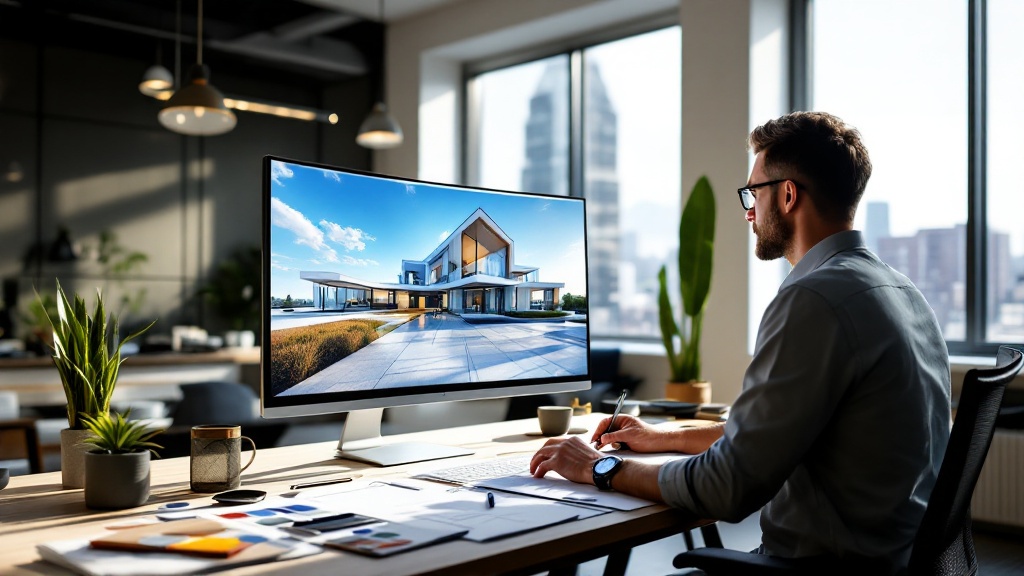
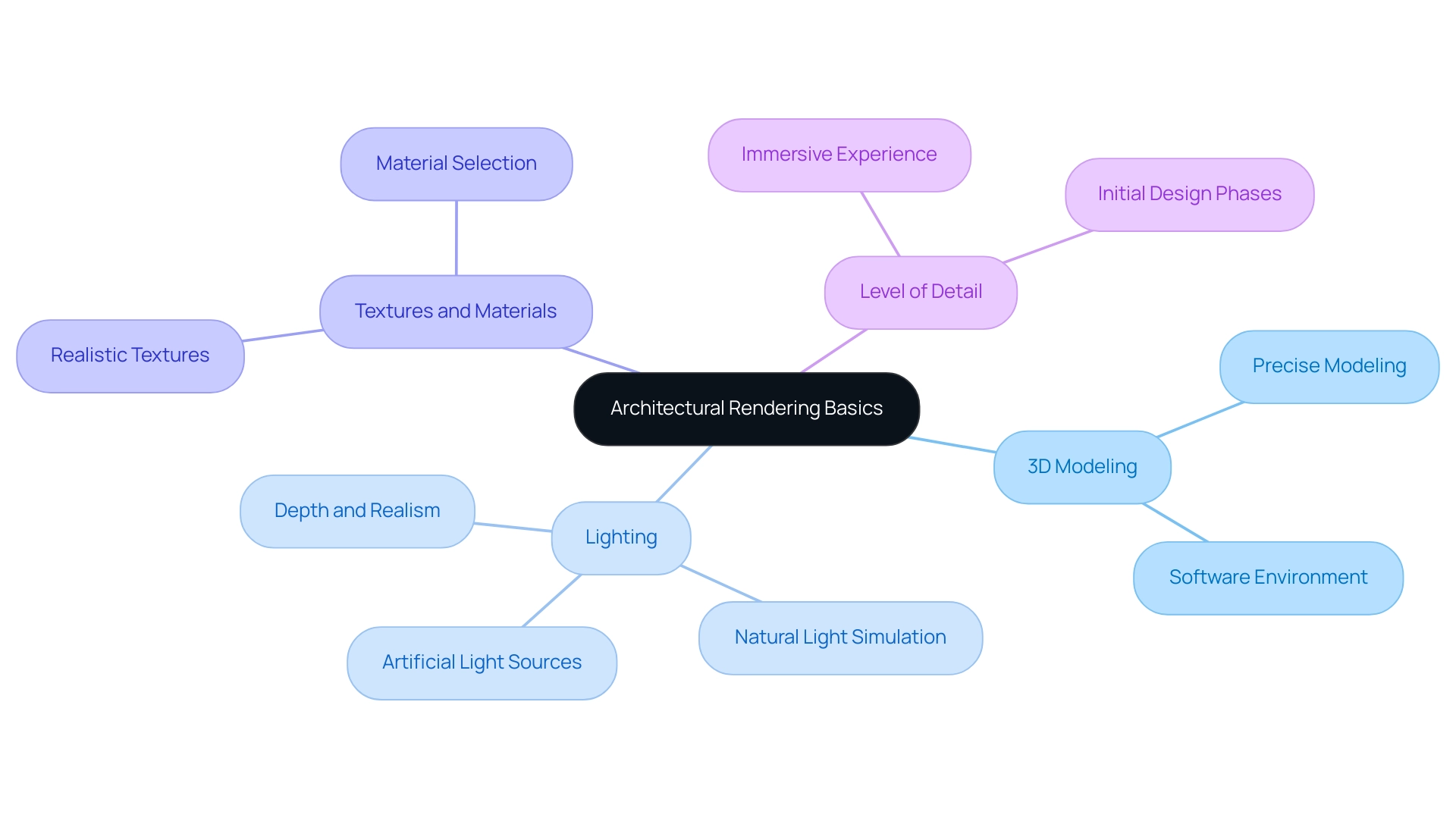
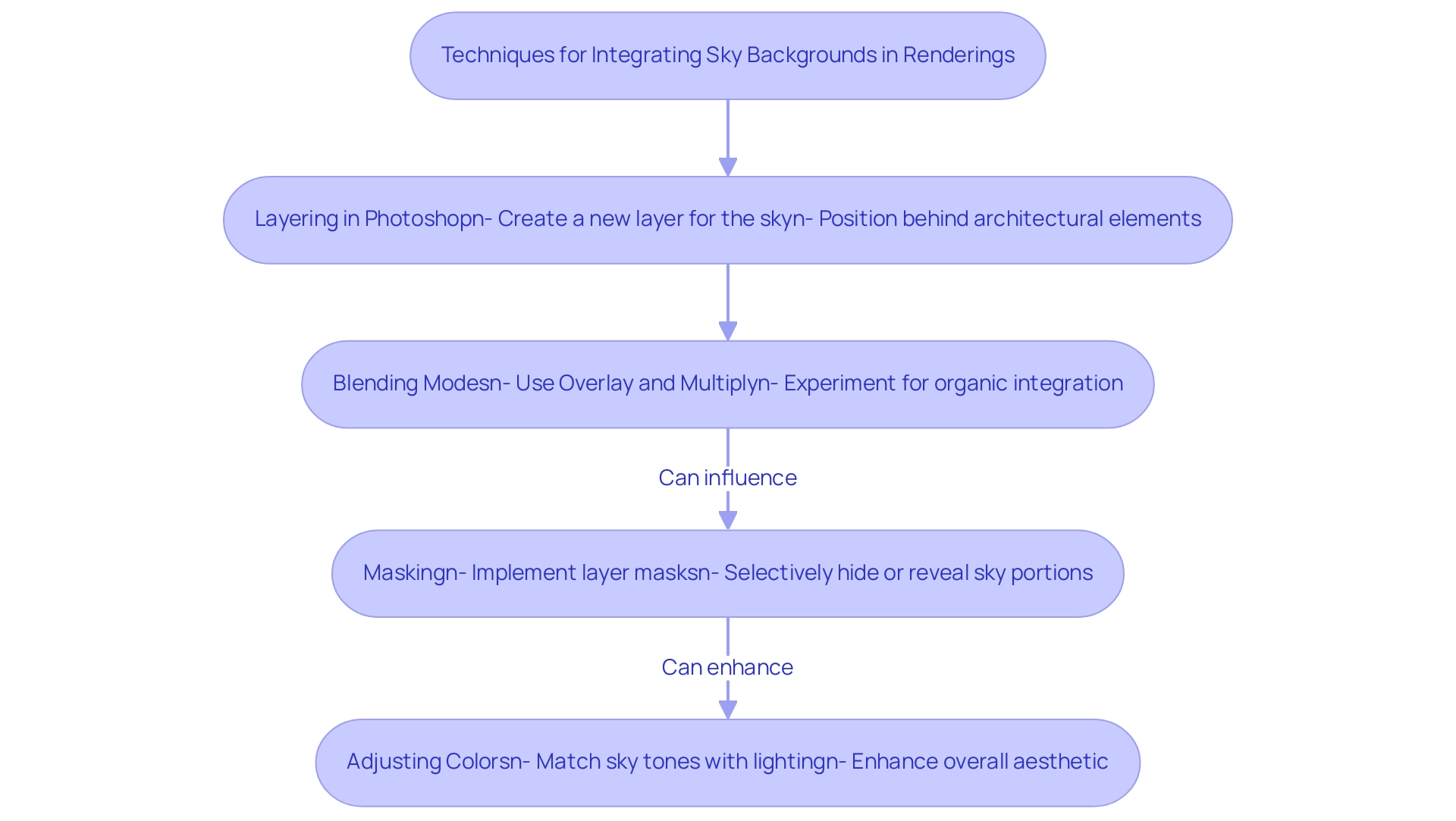
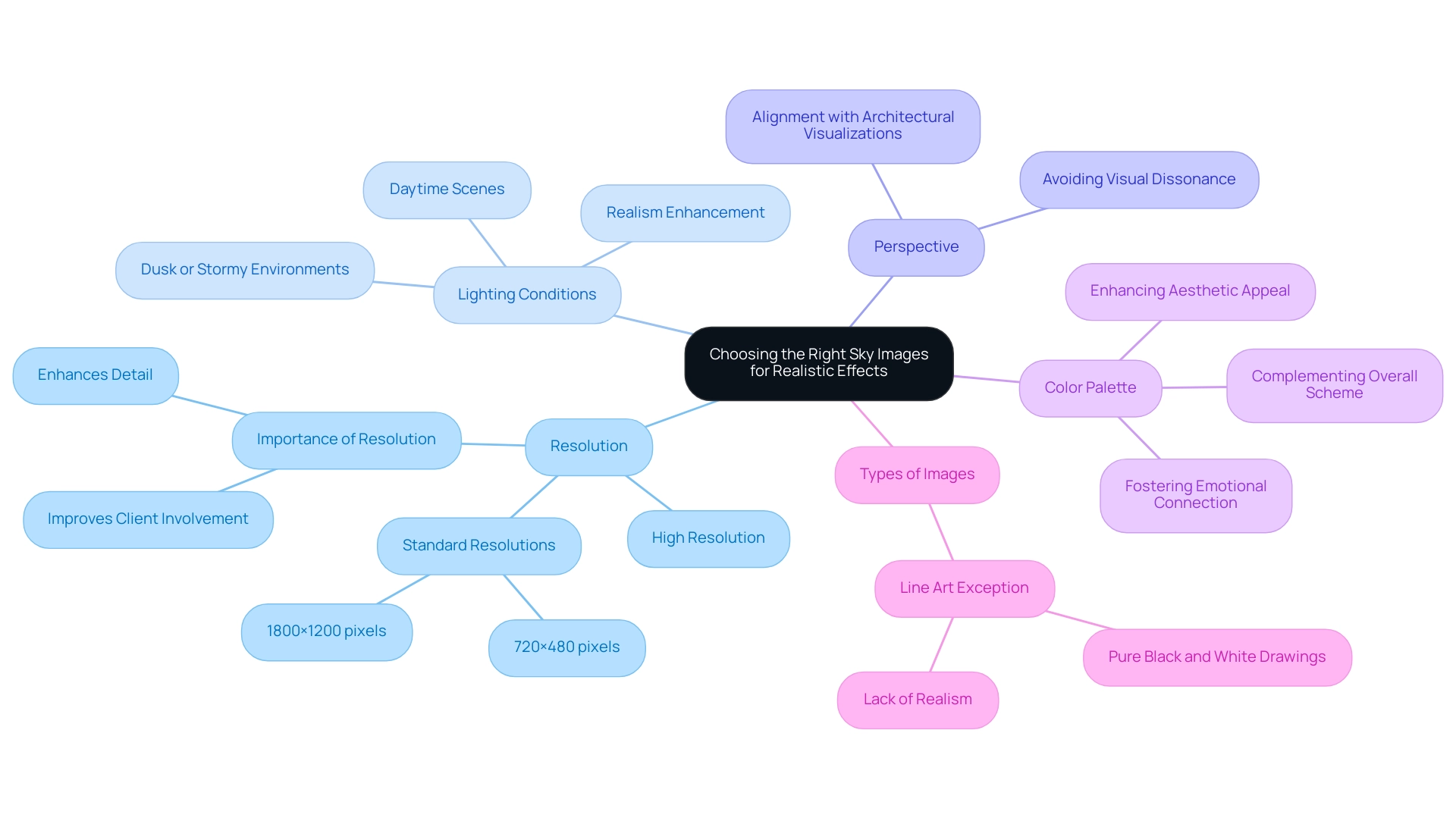
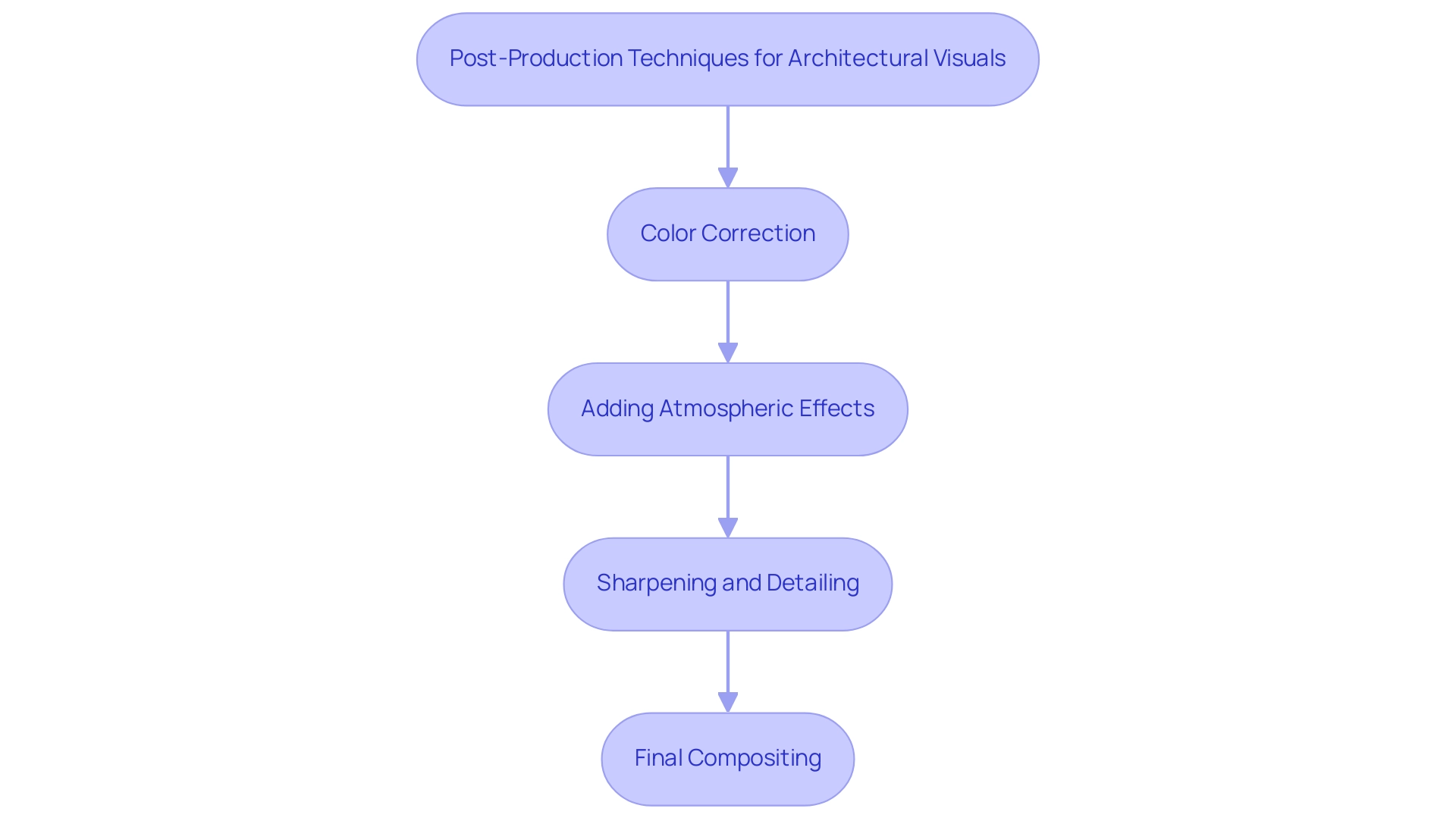
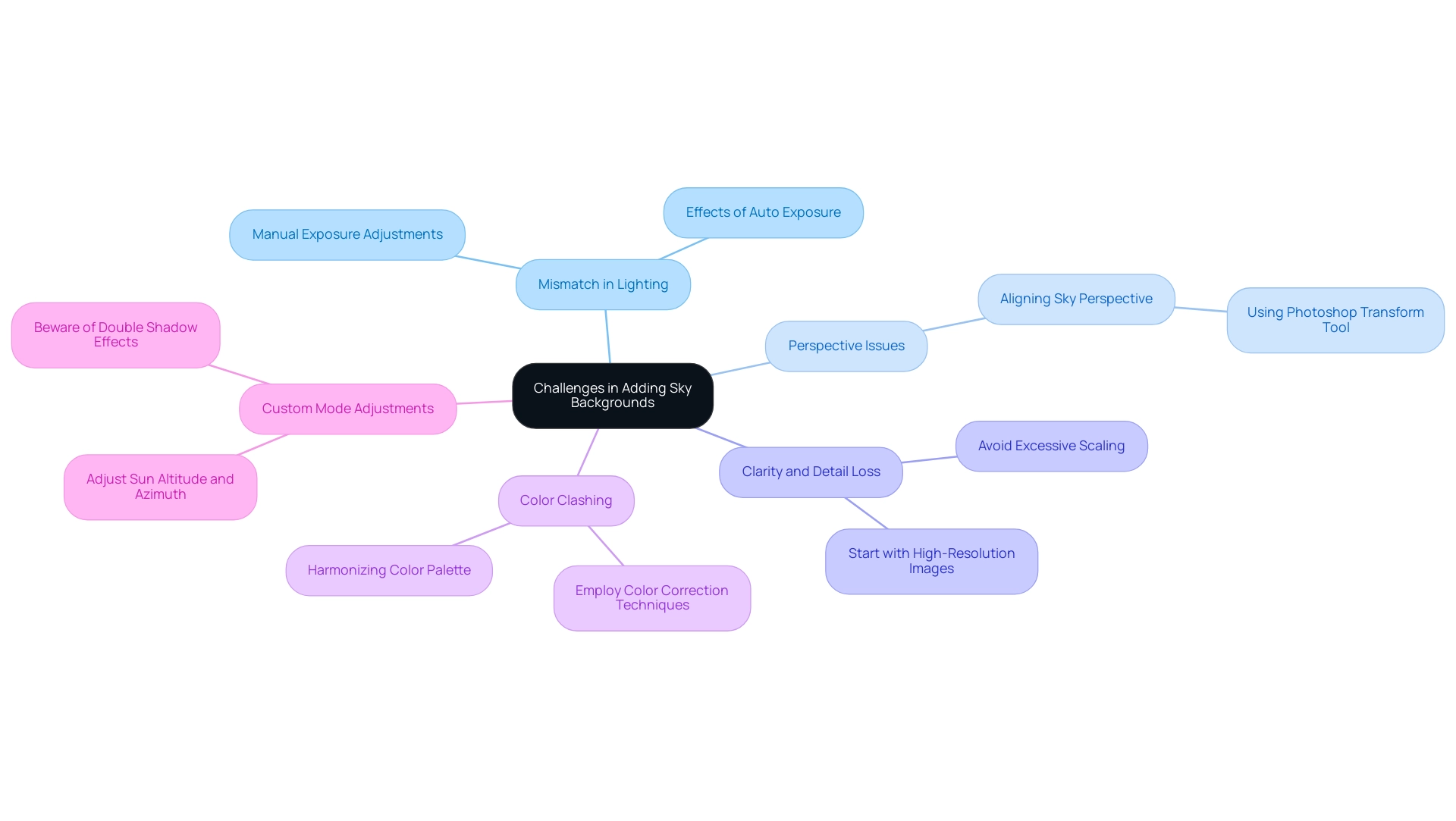
0 Comments